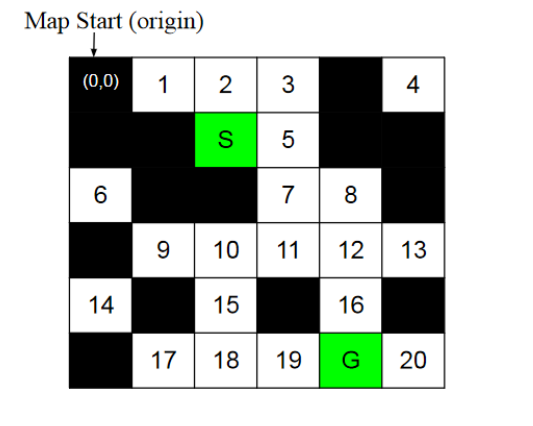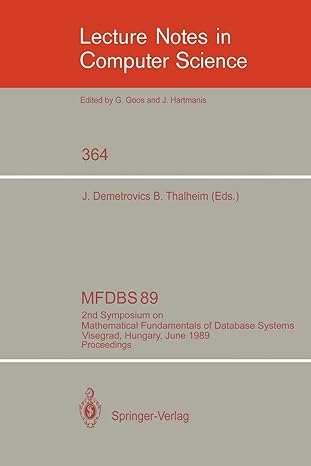Answered step by step
Verified Expert Solution
Question
1 Approved Answer
A 1 : A 2 D grid map is given below. You are required to plan path from start ' S ' to goal '
A: A D grid map is given below. You are required to plan path from start to goal Map Start origin
table
Grids in black color are obstacles nonempty grids Empty grids are numbered for convenience.
Starting point of the map also indicated. Subsequent grids can be addressed by their and
coordinates.
Represent the map as a tree structure with being root also write costs Assume the
robot can only take four possible actions if allowed by map from any given grid ie left,
right, up and down.
For Dijkstra and A the cost of moving from node to adjacent allowed node is unit.
On paper, run Breadth first, Depth first, Dijkstra, and A to plan path from S to G
Answer following two questions for each algorithm:
o How many nodes grids have been explored by each algorithm before it hit the
goal.
What is the path generated by the each algorithm. You can indicate the path by
node numbers eg S
o Make a table enlisting above results for all algorithms.Man Start orioin
Note: For A you can use your own heuristic. Make a suitable choice of heuristics, and clearly
explain what is your heuristic function and why are you using it
Map Start origin
table
PLEASE DO IT ASAP

Step by Step Solution
There are 3 Steps involved in it
Step: 1

Get Instant Access to Expert-Tailored Solutions
See step-by-step solutions with expert insights and AI powered tools for academic success
Step: 2

Step: 3

Ace Your Homework with AI
Get the answers you need in no time with our AI-driven, step-by-step assistance
Get Started


